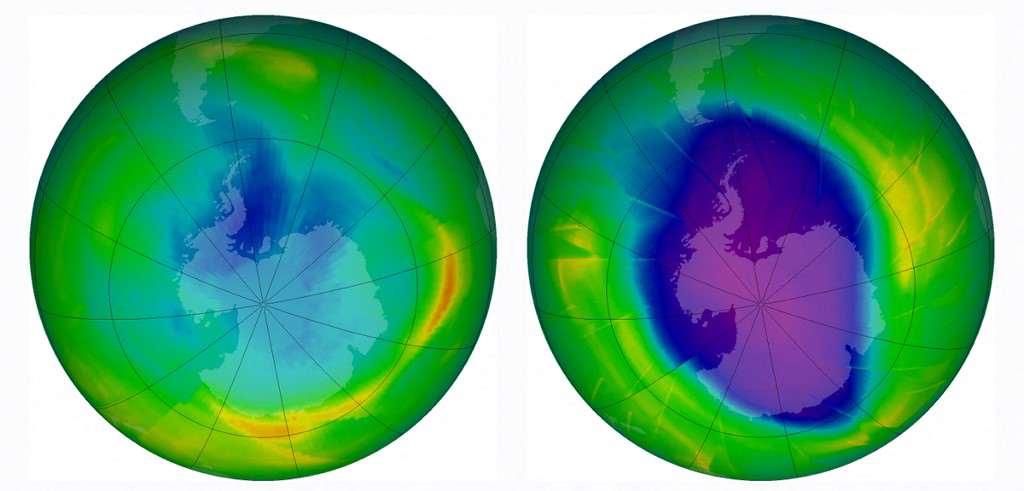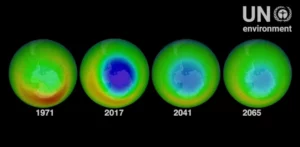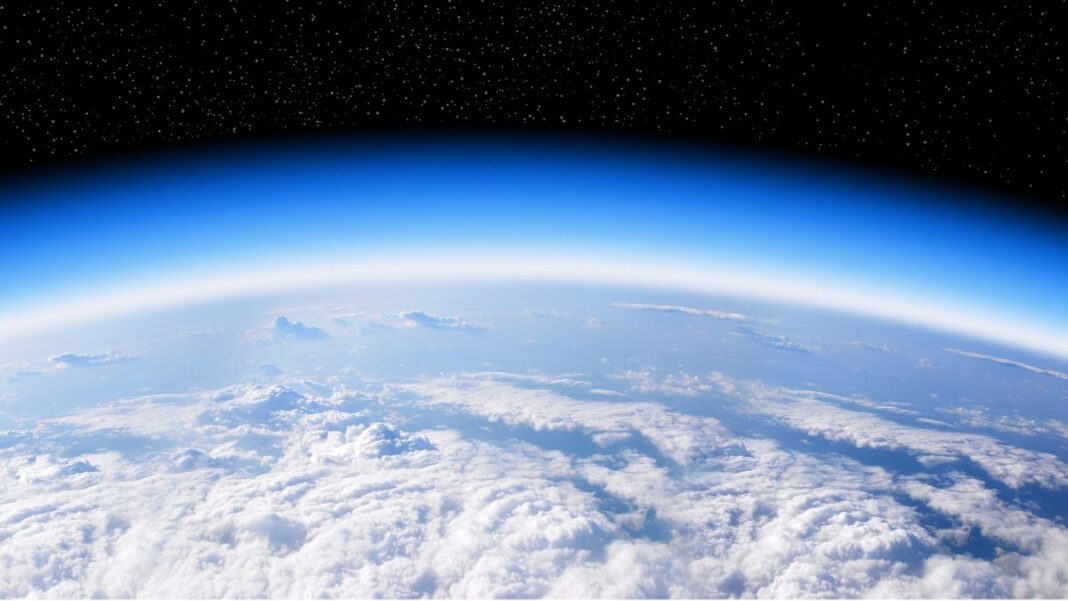As ozone-depleting chemicals are phased out worldwide, a new United Nations-backed assessment finds that the Earth’s ozone layer is on course to regenerate fully within decades.
The globe is shielded by the ozone layer from dangerous UV rays. However, ozone-depleting compounds like chlorofluorocarbons, or CFCs, which are frequently found in refrigerators, aerosols, and solvents, have been responsible for a hole in this shield since the late 1980s, according to scientists. The damage was limited because of international cooperation. According to the assessment by a panel of experts published on Monday, the usage of CFCs has fallen by 99% since the Montreal Protocol entered into force in 1989, which started the phase-out of those and other ozone-harming chemicals.

The ozone layer is anticipated to return to 1980 levels for the majority of the earth by 2040 if global policies are maintained, the assessment showed. The recovery period for Polar Regions is longer: over the Arctic in 2045 and over the Antarctic in 2066. “Ozone action sets a benchmark for combating climate change. According to Petteri Taalas, secretary general of the World Meteorological Organization, “our achievement in phasing out ozone-eating chemicals shows us what can and must be done – as a matter of urgency – to transition away from fossil fuels, reduce greenhouse emissions, and so limit temperature increase. According to a 2021 study published in the journal Nature, ozone-depleting chemicals are strong greenhouse gases that, in the absence of a restriction, might have caused up to 1 degree Celsius of additional global warming.

Scientists have cautioned that global warming should be kept to a maximum of 1.5 degrees to avoid the worst effects of the climate problem even though the earth has already warmed by about 1.2 degrees since the industrial revolution. According to scientists, the probability of major drought, wildfires, floods, and food shortages would significantly increase if global warming exceeds 1.5 degrees. In this review, which is released every four years, scientists also examined the possibility of solar geoengineering, which involves trying to stop global warming by taking steps like spraying chemicals into the stratosphere to bounce sunlight away from the earth.
They concluded that stratospheric aerosol injection might assist to slow down global warming but cautioned that there might be unexpected consequences. According to the paper, which is released every four years, using the technology “may also alter stratospheric temperatures, circulation, and ozone generation and destruction rates and transit.”


